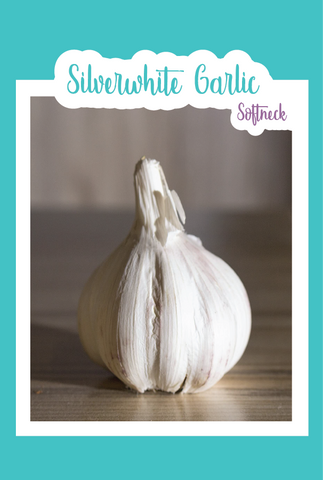
Organic Montana Giant Garlic (Hardneck)
***I will not be selling garlic this year, I apologize for the inconvenience***
Hardneck
Porcelain
1 Organic Bulb
Approximately 4-6 large cloves per bulb
Fall Planting Days to Maturity: About 240 days
Spring Planting Days to Maturity: About 90 days
Description: The Montana Giant is a porcelain hardneck variety that grows well in colder Northern states. It produces large, disease resistant, full flavored, reddish bulbs. The Montana Giant produces jumbo cloves that are a bit similar to the Music variety, but is considered to have better flavor. It is robust, earthy, and has subtle heat, that mellows out quickly. Plus, their easy to peel cloves are great to cook with, and can also be used raw in dishes. The Montana Giant grows best in zones 3-8.
****Limited stock, and offered on a first come first serve basis. If we run out of, or have an issue with a variety that you pre-ordered, then we will contact you. If we have a substitution then we will offer it to you, if we do not, we will give you a refund. You can choose to not accept the substitution, and receive a refund as well.****
How To Grow Your Own Garlic
Sowing: In Southern states, in zones 8-10, plant cloves in December for a spring harvest. In the North, plant softneck varieties in early spring for a summer harvest, and hardneck varieties in the fall for a spring harvest. Break open your garlic and take out the individual cloves. Choose the biggest cloves to plant. Planting the smaller cloves will result in small bulb. Do not remove the clove wrappers. Plant cloves pointed side up. With the blunt part facing down, in well-drained soil, that is rich in organic matter. Choose a location with full sun and where you did not plant any alliums the previous year. Work organic matter into your soil, at least 6-8 inches deep, removing stones, then level and smooth it. Plant cloves with the pointed side up, in rows 1-2 feet apart, 1 inch deep, and 4 inches apart. Firm lightly and water gently. Spring planted garlic emerges in 14-21 days. Fall planted garlic may not emerge until spring. If the garlic emerges in the fall, and a heavy frost is expected, mulch the tender greens for protection.
Growing: Keep weeds under control during the growing season. Weeds compete with plants for water, space, and nutrients. Keep plants well watered during dry periods to promote rapid, uninterrupted growth. Plants need about 1 inch of water per week during the growing season. Companion plant garlic with tomatoes, kale, and carrots to deter pesky garden pests. Make sure to keep your soil moist but not saturated, or you may rot your growing bulbs. Garlic is a heavy feeder, and will do best if provided with a well balanced fertilizer, or compost, when planting, and again during the spring.
Harvesting: When the foliage begins to yellow, bend back the tops to hasten the yellowing and drying of the tops. Feel around the top of the bulb to make sure the cloves have fully formed. Harvest garlic when their green leaves have turned brown and fallen over. Be sure to dig deep, and under garlic so you don’t break the bulb when pulling them up. When you harvest your garlic, allow them to dry in the sun for a few hours. After, spread your garlic out in a well-ventilated location, until the tops are thoroughly dry for about 3-4 weeks. Cut the tops about 1-2 inches above the bulbs, or braid the tops together if they're softneck varieties. Store loose bulbs in a dry, cool, airy place in baskets, or hang braided garlic strings. Garlic may be frozen, dehydrated, made into vinegar, or garlic powder and salt for extended preservation. Garlic can also be made into an organic pesticide!




